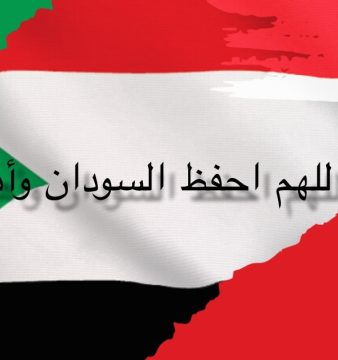The Landmarks of Sudan
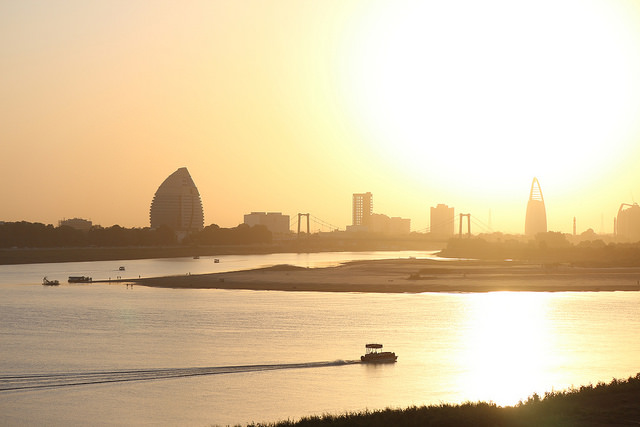
Image credit: Juri Knauth
Sudan (officially the Republic of Sudan) is the name of the sub-Saharan region, which stretches from West Africa to East Central Africa. Sudan, a country in North East Africa, shares borders with seven countries. To the east are Ethiopia and Eritrea, to the north are Egypt and Libya, to the west are Chad and Central African Republic (CAR) and to the south is South Sudan. The name, Sudan, means ‘land of the blacks’ in Arabic. Sudan was previously known as Kush, especially to the Greeks.
Before the secession of South Sudan in July 2011, Sudan was the largest African and Arab country and the tenth largest country in the world. Today, it’s the third largest country in Africa with a population of over 40.5 million. Along with Egypt, Uganda, South Sudan, Kenya and Ethiopia, Sudan is home to the longest river in the world, the Nile River.
Although Sudan is a Muslim country where the majority of its population practice Islam, the country also has a large population of Christians, Copts and indigenous religions.
It’s believed that humans first settled in Sudan in 5000 BC. It has been home to many ancient civilisations throughout the years, such as the Kingdom of Kush, Meroë, Napata, Alwa, Maqra and others — most of which flourished along the Nile. The history of ancient Sudan overlaps the history of Pharaonic Egypt for eras, especially the 25th dynasty of Egypt where the most powerful of the Black Pharaohs, Taharqa, came to power ca. 690 BC, controlling an empire stretching from Sudan to the Levant. He was buried in Nuri, Sudan where his statue was discovered in January 2010.
Sudan gained independence from British colonisation on 1 January 1956. However, Sudan has been battling ongoing civil conflicts between the central government in northern Sudan and rebel groups in the south for decades. The civil war ended in 2005 with the signing of the Comprehensive Peace Agreement by the Sudan People’s Liberation Army/Movement and the government of Sudan. South Sudan then separated in 2011 as an independent country, after a referendum following the transitional period stipulated by the agreement.
Sudan witnessed three military coups — in 1958, 1969 and 1989. Democracy, which was chosen as the means of rule in Sudan in 1956, was interrupted by the three coups. In 1989, Brigadier General Omar Al-Bashir led a military coup, overthrowing a civilian government headed by Sadiq Al-Mahdi, the leader of the Umma Party, and became chairman of the Revolutionary Command Council Salvation, and has also been the president of the Republic of Sudan ever since.
Sudan has many tourist destinations and landmarks due to its diverse ethnicities, geography, history and culture. In the north, are the remains of the ancient Nubian kingdoms, which are the cradle of human civilisation with its pyramids and pharaonic temples. In the east, where the waves of the Red Sea meets Sudanese sand, are unique coral reefs that are home to colourful fish and is a paradise for diving enthusiasts. In the west, the Saharan Desert extends to infinity with volcanic peaks and is characterised by a climate similar to that of the Mediterranean Sea. In addition, cultural tourism is represented in the activities of various tribes and ethnicities, and their traditional music and customs.
Le Soudan, pays connu pour sa riche histoire et ses diverses cultures, connaît également un intérêt croissant pour les casinos en ligne. Situé dans le nord-est de l’Afrique, le Soudan se caractérise par ses anciens sites archéologiques, le majestueux fleuve Nil et un mélange vibrant d’ethnies et de traditions. Dans ce contexte, l’émergence des casinos en ligne devient une tendance notable, attirant l’attention des amateurs de divertissement de la région. Alors que le Soudan continue d’adopter les technologies modernes, les casinos en ligne internationaux tels que casino bahigo ont trouvé leur place dans le cœur de ceux qui recherchent des divertissements numériques. La facilité d’accès à une variété de jeux de casino depuis le confort de la maison a contribué à la popularité croissante des jeux en ligne. Cette tendance ne reflète pas seulement l’évolution mondiale des préférences en matière de divertissement, mais montre également comment les Soudanais explorent de nouvelles formes de loisirs à l’ère numérique.
The capital city of Khartoum itself is vast and prosperous with historic, cultural and religious sites across Sudan. Many of Sudan’s landmarks are in Omdurman, which sits in the triangular capital of Sudan along with Khartoum and Khartoum North. Referred to as ‘Omdur’ in short, it forms the largest part of the triangular capital of Sudan. Learn more in our article, ‘Omdurman: The National Capital of Sudan’.
From Khartoum to the ancient city of Meroë, there is much to see and do in Sudan. Here are the landmarks of Sudan:
Abdul Qayyum Gate
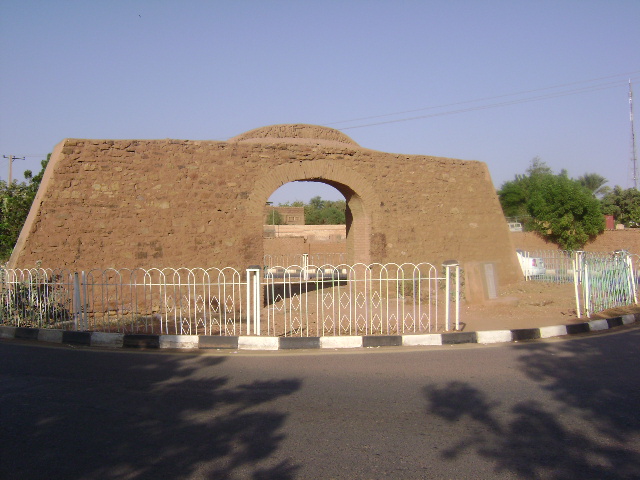
Image source: Husam Mohammed
The Abdul Qayyum Gate is the remnants of the city’s ancient wall, which surrounded Omdurman from 1885 and 1898. It’s located on Al Bawaba Street (named after the Abdul Qayyum Gate) between Al Mawrada and Al Mulazmin. Nearby landmarks are Khalifa House Museum and Al-Nilin Mosque.
Al Mahdi Tomb
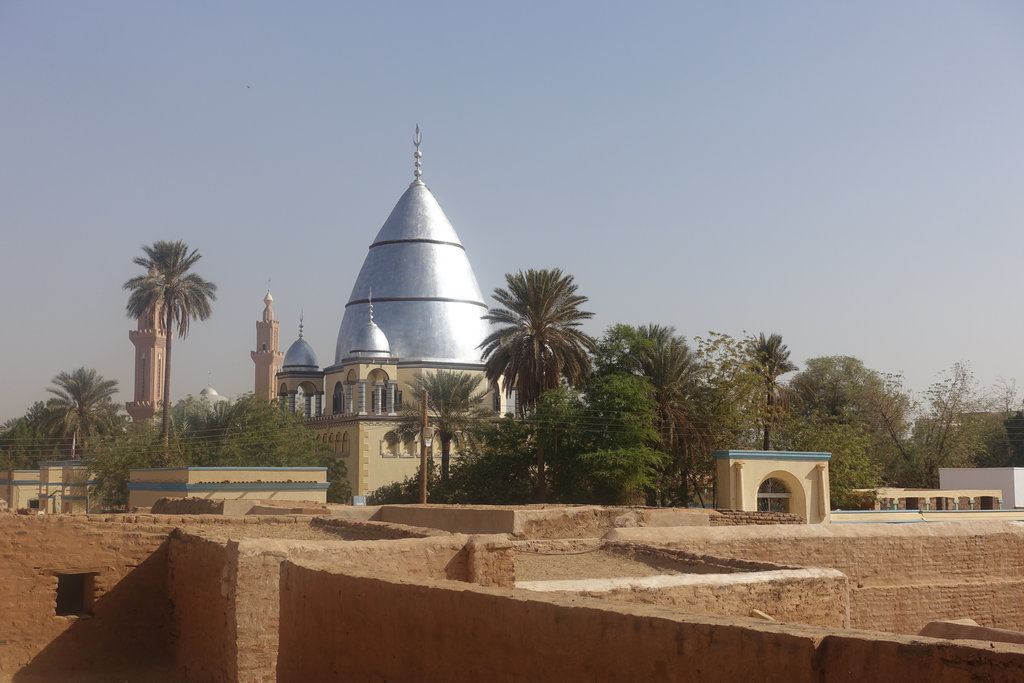
Image source: Husam Mohammed
The tomb of Sudanese leader Imam Mohammed Ahmed Al-Mahdi is one of the most important spiritual and historical monuments of the city of Omdurman. It survived the bombing of the British occupation forces led by Lord Kitchener following the famous Battle of Karari in 1889 when the English regained occupation of Sudan. According to historical documents, Lord Kitchener wanted to bomb the morale of the anti-British revolutionaries after that battle, in which nearly 10,000 Mahdi rebels were killed. Before the independence of Sudan, Imam Abdulrahman Sadig Al-Mahdi rebuilt the tomb and built a complex around it, which then witnessed many contemporary political events in Sudan. The dome of Al Mahdi today stands in the heart of the city of Omdurman, which is called the national capital as a witness to the history of contemporary Sudan. The Museum of the Caliph is overwhelmed with many of the effects and remnants of that era and receives tourists and those interested in the history of this era of Sudan.
Al-Nilin Mosque
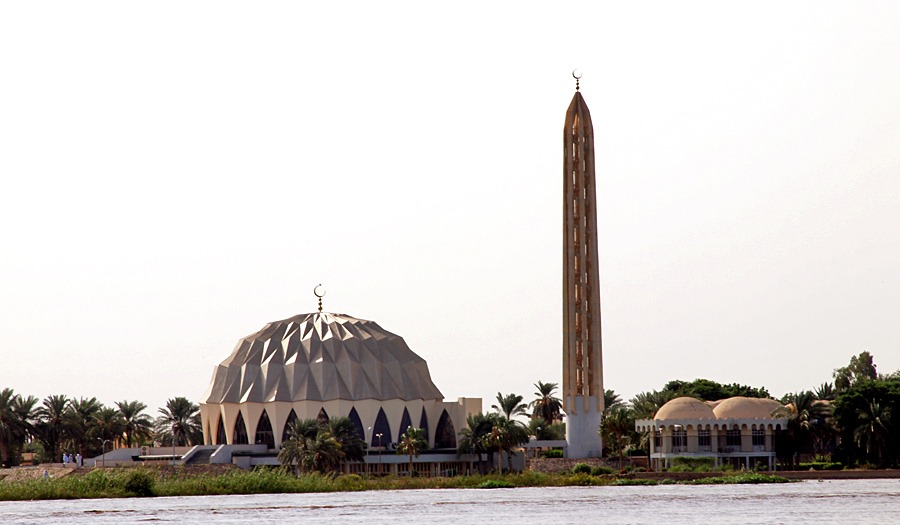
Image source: Wikipedia Commons
Al-Nilin Mosque sits in Omdurman on the banks of the White Nile. It was inaugurated in the mid-1970s during the reign of President Jaafar Mohammed Nimiri and is considered to be one of the most distinctive architectural buildings in Sudan. The mosque was built as a giant shell where the White and Blue Niles meet. It was designed as part of a graduation project by students from the Faculty of Engineering and Architecture at the University of Khartoum. It is the first building in Sudan to be constructed of aluminium cutters and without pillars supporting the roof; as the roof connects directly to the ground like a shell.
Al Tabia
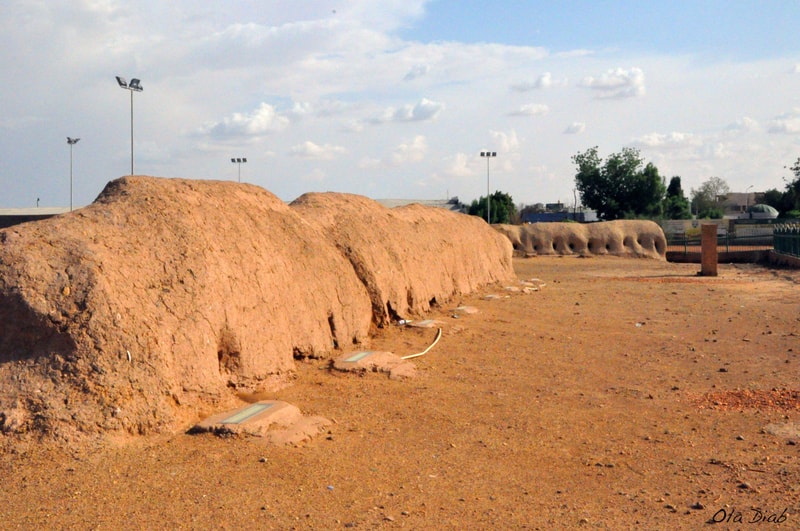
Image credit: Ola Diab
Along the Nile River in Omdurman, find the fortified site of defence walls, known as Al Tabia, which were built in 1896 with mud and solid rocks. These walls were used by Al Mahdi’s Army to attack enemies coming from the Nile.
Jebel Barkal
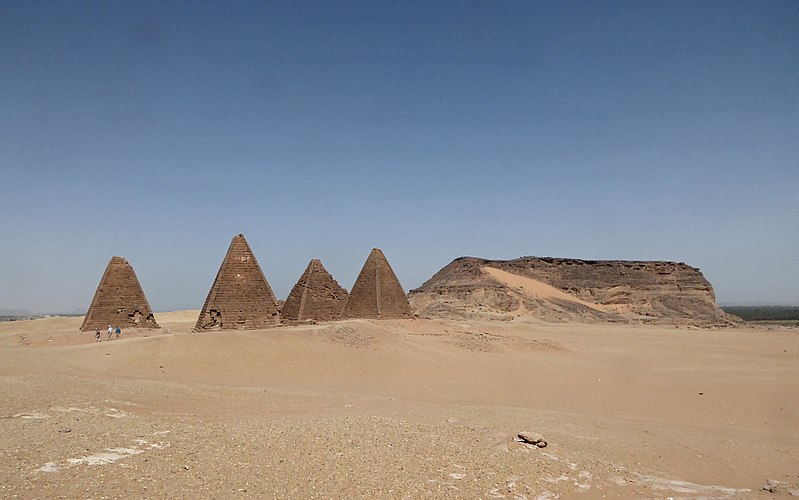
Image source: Wikipedia Commons
Jebel Barkal and the Sites of the Napatan Region is a collection of five archaeological sites, stretching over more than 60 km in the Nile valley. The sites pertain to the Napatan (900 to 270 BC) and Meroitic (270 BC to 350 AD) cultures, of the second Kingdom of Kush. On the site are tombs – with and without pyramids – temples, living complexes and palaces. Since the ancient times, the hill of Jebel Barkal has been strongly associated with religious traditions and folklore. The local people of the Nile Valley still consider the largest temples at the unique archaeological site sacred. In 2003, the Jebel Barkal and the Sites of the Napatan Region were enlisted on the UNESCO World Heritage List.
Jebel Toteil (Taka Mountains)
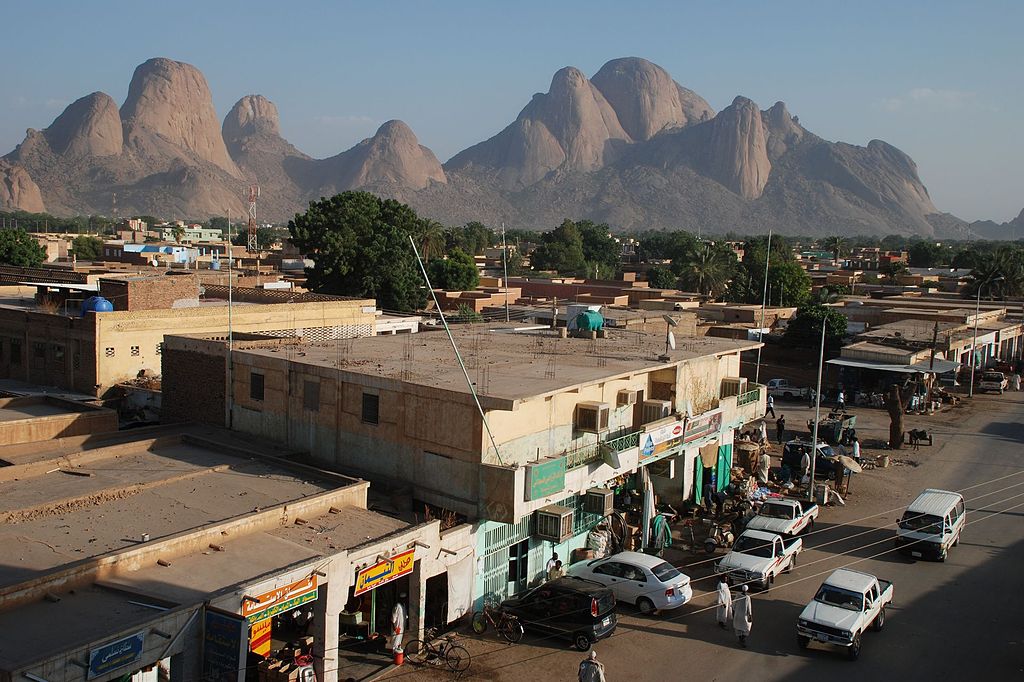
Image source: Wikipedia Commons
At least seven hours away from Khartoum (by vehicle) is the state of Kassala, home to Jebel Toteil, widely known as Taka Mountains. It’s a popular honeymoon destination in Sudan with a resort and several cafes and restaurants surrounding its base. The coffee there is a must-have beverage. Although it’s not easy to climb, it’s also a great destination for rock climbers. Nearby is the Khatmiyya Hasan Tomb.
Khalifa House Museum
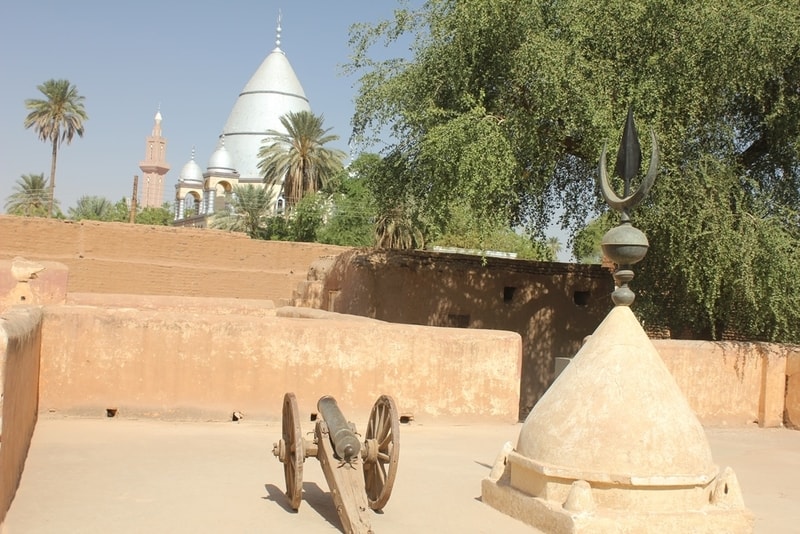
Image source: Husam Mohammed
Among the tourism landmarks is the Khalifa House Museum, located in Omdurman opposite the Al Mahdi Tomb. It is an ethnographic museum and the house where Khalifa Abdullah ibn Mohammed lived. It’s an archaeological site that dates back to the era of the Mahdi State since 1881. The house was transferred into a museum in 1928.
National Museum of Sudan
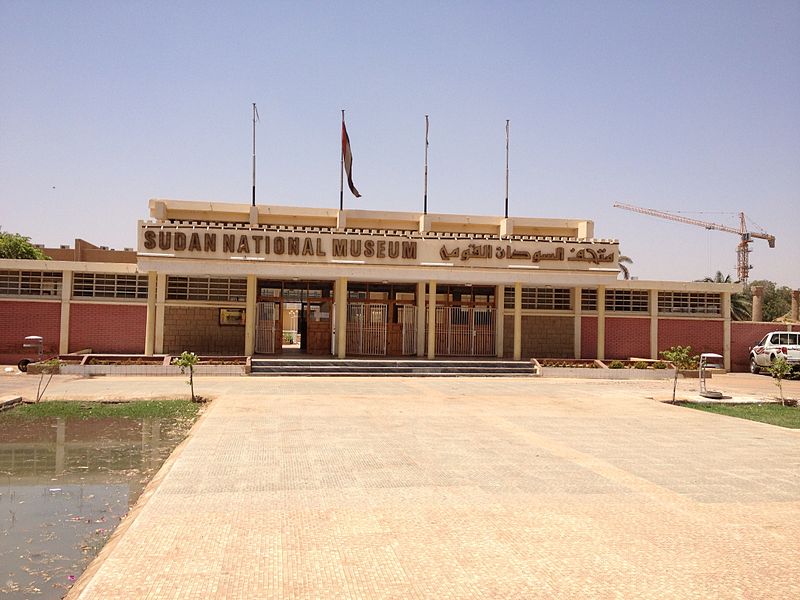
Image source: Wikipedia Commons
Located on the Nile Avenue in Khartoum in Al-Mugran, where the White and Blue Niles meet, is the National Museum of Sudan or Sudan National Museum. The two-storey building was constructed in 1955 and established as a museum in 1971. The building and its surrounding gardens house the largest and most comprehensive Nubian archaeological collection in the world including objects from the Paleolithic through to the Islamic period originating from every site of importance in the Sudan. It houses collections of various periods of Sudan’s history including Paleolithic, Mesolithic, Neolithic, Kerma, Napata, Meroë, and more.
Nile Street
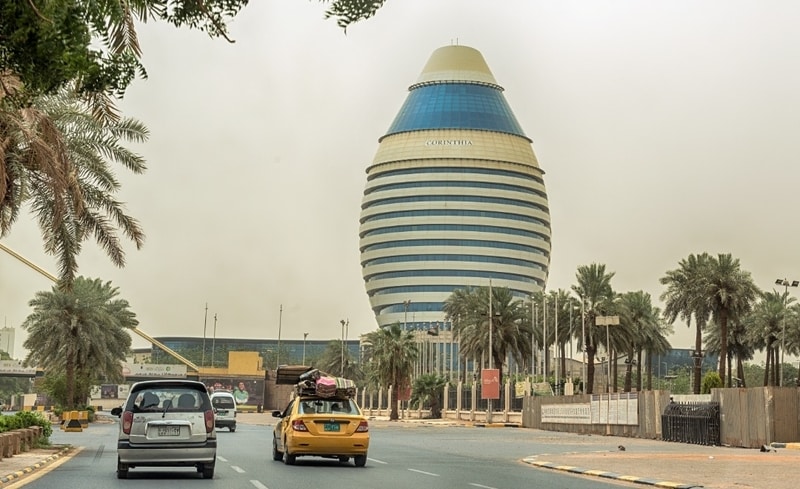
Image source: Husam Mohammed
Nile Street or Nile Avenue stretches along the Blue Nile River in Khartoum. It’s one of the most popular places to see or go to in Sudan, overflowing with cafes and restaurants and monumental buildings such as University of Khartoum, The President Palace, The New Republican Palace, Republican Palace Museum, Grand Holiday Villa Hotel and Corinthia Hotel Khartoum. Beginning from Al Manshiya, Nile Street is packed with cafes and restaurants (on boats as well) where you can try Sudanese, Egyptian, Ethiopian, Syrian and Turkish delicacies. On Sudan’s Independence Day, which takes place on 1 January, Nile Street is one of the most popular destinations for celebrations.
Pyramids of Meroë
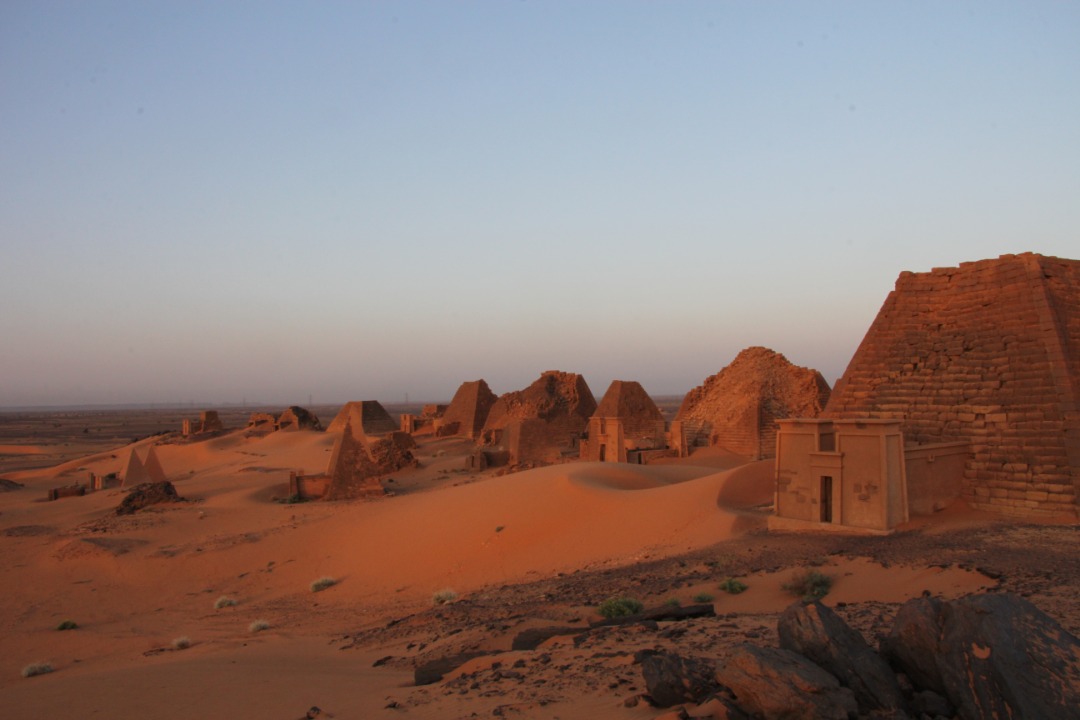
Image source: Wikipedia Commons
The Forgotten Pyramids of Meroë, also known as Al Bagrawiyah, is an ancient city and home of the Nubian Pyramids of Meroë in the River Nile State. It’s about 200 km from Khartoum and was once the capital of the Kingdom of Kush. In Sudan, there are at least 220 pyramids in Meroë, a larger number than Egypt’s pyramids. It is home to one of the oldest pyramids in the Nile Valley established by the Kushite rulers in 300 BC. There are three parts to the Pyramids of Meroë; the south cemetery features nine royal pyramids, four of which belonged to kings and five belonged to queens;195 other tombs complete the cemetery. The north cemetery contains 41 royal pyramids, 30 of which belonged to kings, six to queens and five to other royals, and three more non-royal tombs for a total of 44. The west cemetery is a non-royal site with at least 113 tombs.
Nubia was widely known for building pyramids where Nubians believed that their kings were living gods and did not die, and their kingdoms had to be buried in great tombs. The bigger pyramids are older than the ones in Egypt. In June 2011, the Archeological Sites of Meroë were enlisted on the UNESCO World Heritage List.
The Nile River and Al-Mugran

Image source: Husam Mohammed
Sudan is also home to the longest river in the world, the Nile River. Along with Euphrates River, the Nile River is also considered to be one most abundant rivers in the Arab world. The Nile River divides Sudan into two parts, east and west. It is located in the African continent and flows to the north. It has two major rivers, the White Nile and the Blue Nile. The White Nile is located in the Great Lakes region of Central Africa and follows a path along the South of Rwanda from Northern Tanzania to Lake Victoria, to Uganda and then Southern Sudan, while the Blue Nile begins at Lake Tana in Ethiopia at the coordinates and then goes to Sudan from the south-east and then the two rivers converge near the Sudanese capital of Khartoum and meet at Mugran. The site where the two Niles meet is known as Al-Mugran. References indicate that the region of (Mugran al-Nilain) was located in antiquity in the homeland of the Nilians. Archaeological excavations in 1945 revealed a homeland for the Nilites in the southern end of the present city of Khartoum, whose civilisation dates back to the pre-familial era. It was also proven to be inhabited during the Nabataean and Meroë periods between 750 BC and 350 AD.
The Roman Kiosk at the ruined ancient city Naqaa
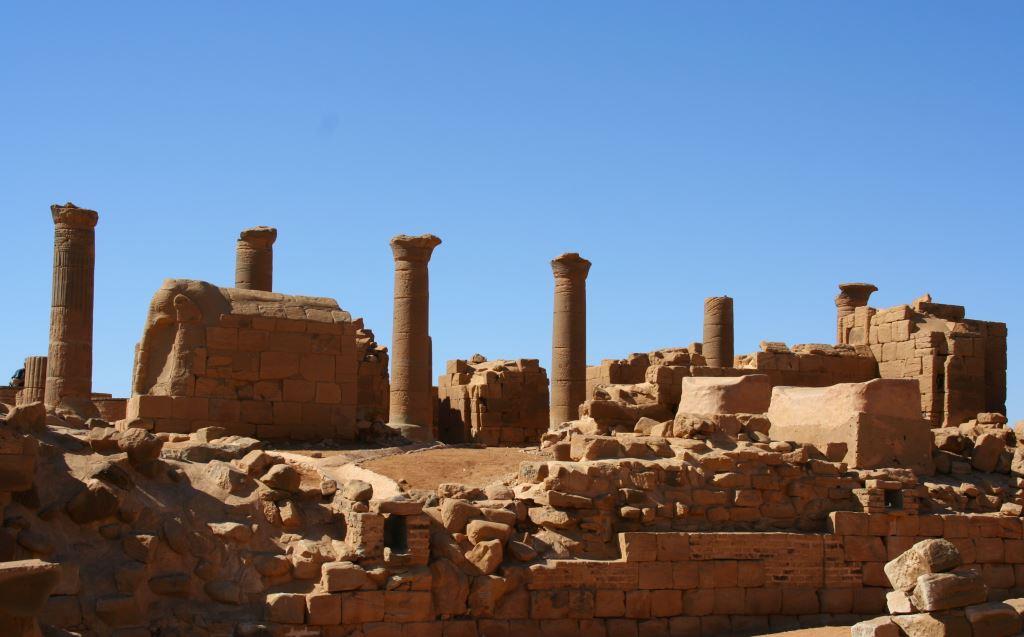
Musawwarat es-Sufra, a large Meroitic temple complex in Sudan. (Photographer: Mauro Gambini)
Located in the River Nile State, the Roman Kiosk at the ruined ancient city Naqaa is approximately 170 kilometres away from Khartoum. There are several ancient temples and Nubian monuments including the Temple of Apedemak, Temple of Amun and the Roman Kiosk in Naqaa as well as in the nearby areas of Musawwarat Es Sufra.
Omdurman Market
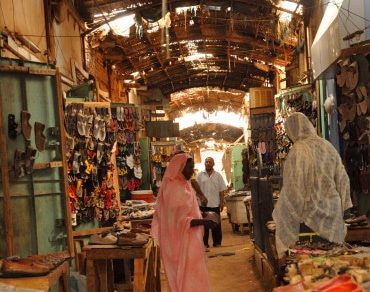
Image credit: Ola Diab
Omdurman Market or Souq Omdourman is an ancient souq exhibiting a variety of handicrafts, artefacts, souvenirs and other Sudanese folk and traditional items/products. It’s a great place to visit for traditional souvenirs. The market is usually open from 8 am to 8 pm.
Other landmarks and sites in Sudan:
- Al Sabalouga (Sabaloka Gorge) and the Sabaloka Game Reserve
- Dinder National Park
- Kerma, Dongola
- Republican Palace Museum
- Sheikh Hamad Al Nil Tomb
- Souq Al Naga
- Suakin, Port Sudan
- The Clock Tower
 Husam Aldeen Mohammed is a journalist, author and producer based in Sudan, working with several Sudanese channels, newspapers and magazines, covering a variety of news stories in Sudan.
Husam Aldeen Mohammed is a journalist, author and producer based in Sudan, working with several Sudanese channels, newspapers and magazines, covering a variety of news stories in Sudan.

